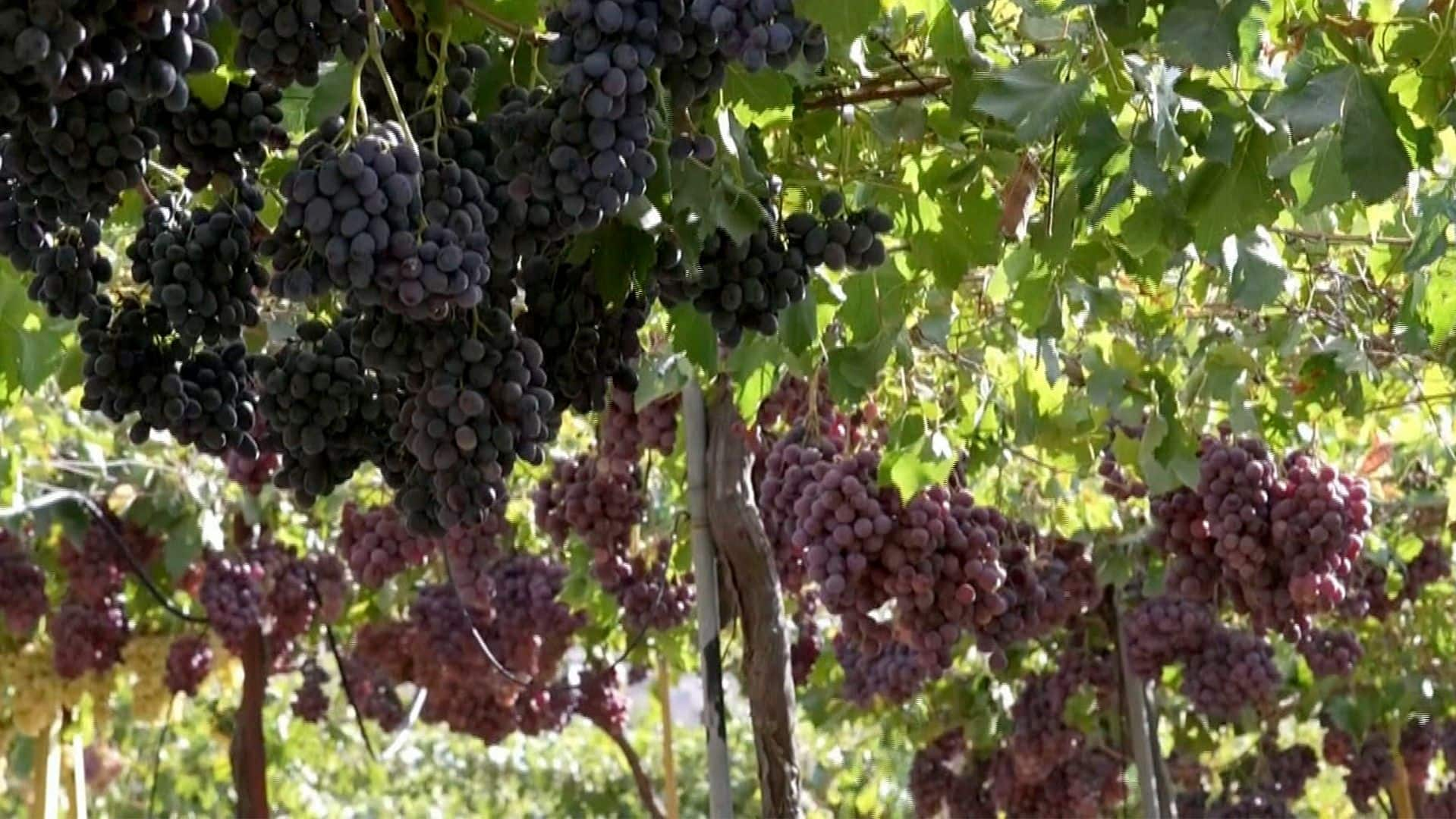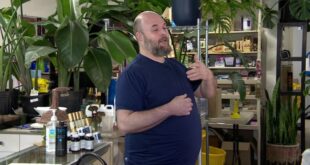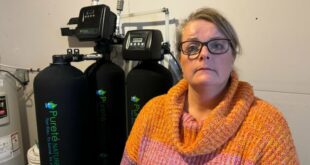Wine labels don't reveal the struggle to keep smoke from sneaking into the bottle

When wildfire raged about a kilometre from the vineyards owned by Blue Mountain Winery in 2021, winemaker Mike Mavety says he knew the vintage would be difficult work.
"It was pretty nasty," Mavety recalled of the smoke that hung over the vines near Okanagan Falls, B.C., for close to a month, just as the grapes were beginning to ripen.
"It would have been fairly difficult to breathe … We were having to limit the number of hours our guys were out working."
But the real challenge would emerge in the fermentation tanks.
"We went into the harvest, assuming or hoping that we would be able to do some bottling," Mavety said.
But lab tests revealed relatively high levels of acrid smoke molecules had found their way into the fruit. So they dumped granulated carbon into the tanks with the crushed grapes, hoping it would help, Maverty said. It didn't.
"It strips a lot of flavours and there's not a lot of ways of putting it back together," Mavety said of the aggressive treatment for what's known as smoke taint.
Smoke taint, like the same suggests, is caused by airborne compounds from burning trees and soil that settle on grapes still on the vine. The wildfires don't have to be close to the vineyards. And it doesn't take much smoke on the grapes to affect a batch of wine.
If allowed to remain in the final product, smoke can produce off-flavours like ash, barnyard and salami.
Ultimately, Blue Mountain chose to cancel its entire 2021 vintage. It sold 120,000 litres of wine, not good enough for its own label, to an undisclosed company for blending into other, less prestigious wines.
"I commend Blue Mountain for what they did," said Severine Pinte, winemaker at Le Vieux Pin and LaStella Wineries, located in the same region of the Okanagan.
"There is no way to really effectively, without compromising the quality of the wine, remove the smoke taint."
Smoke taint transparency
Research into ridding B.C.'s wine industry of smoke taint is ongoing. Aside from activated carbon, winemakers can resort to reverse osmosis filtration, more gentle crushing and in the case of red wines, removing the skins from the juice as soon as possible.
But even if the wine is fine going into the bottle, some smoke molecules can sneak into the final product. If they are bound chemically to the sugars in the wine, wine makers have found they can be set free after months or years of aging.
When Pinte's company discovered this phenomenon in a couple of wines produced following fires in 2015 and 2021, the winery took the extraordinary step of forewarning its customers in a candid blog post this spring explaining the problem and offering advice on how to reduce any off-flavours before drinking the affected bottles.
"It's our philosophy is to be honest and to be truthful. To be completely transparent," Pinte said.
"It's Mother Nature. We can't control it. I cannot put a canopy over my grapes to protect it from the smoke. So we just have to deal with it," she said, adding that in the nearly three decades she's spent making wine, smoke has only been an issue relatively recently, beginning in 2015.
"Maybe it will be something every year. I don't know."
WATCH | How climate change is affecting wine:

Wine industry challenged by volatility from climate change
Canada’s wine industry is adapting to new challenges brought on by increased volatility in the weather brought on by climate change.
Determining the extent of the problem is its own challenge. No winery likes to talk about potential flaws with a natural product that is at the heart of a business worth $3.75 billion in B.C., according to industry group Wine Growers British Columbia.
The Canada Food Inspection Agency (CFIA), which sets the rules for labelling, does not require wine labels to reveal whether the grapes were exposed to smoke, or to list any of the processes or methods vintners may use to try to remove it.
John Schreiner, a North Vancouver wine writer who's been sampling vintages for nearly 50 years, says you'll never see a wine label with that kind of information.
"You can't expect that wine to be purchased by the consumers if you put a warning on the label that there might be some smoke taint here."
Scarce details
Schreiner says most consumers have nothing to worry about, especially if they're buying wines certified with a Vinters Quality Alliance label (VQA), because the wine has been evaluated by a panel of experts.
But getting details proved challenging. CBC News' questions to B.C.'s Liquor Distribution branch about the discovery and prevalence of smoke taint found in B.C. wine were ultimately referred to the Ministry of Public Safety and the Solicitor General.
In an email response, the ministry would only say that all wine sold in B.C. Liquor stores has "undergone a professional review for quality and flavour by the B.C. Liquor Distribution Branch (LDB)," adding that "these reviews are undertaken by a certified Master of Wines trained to detect issues with products."
Neither the LDB nor the B.C. government would directly address questions about smoke taint, or the challenges it presents for the industry and consumers.
Labelling, the ministry says, is between wine makers and the Canada Food Inspection Agency.
WATCH | Harsh winter threatens B.C. wines:

B.C. vineyards badly damaged by harsh winter
Many vineyards in B.C.’s Okanagan Valley are discovering massive crop damage after an extremely cold December. An estimated 50 per cent reduction in grape production will have impacts for both the wine industry and tourism sector it supports.
Drink the wines now
Justin Hall, the wine maker at Nk'Mip Cellars, says he sees no reason for labels to single out smoke taint or the methods he might employ to rid a wine of it.
"Nothing that we're doing now isn't being done already in some fashion or another," Hall said about methods like reverse osmosis filtration. Hall says the VQA designation also allows him to blend up to 15 per cent of a different vintage into a wine that might just be on the edge.
"It's about mitigation and, you know, not panicking and just kind of dealing with it."
Given that many of the wines made in 2021 following fires in B.C.'s Okanagan haven't been released, it's possible that some may habour some hitchhiking smoke molecules just waiting to be freed from the bottle at some point in the future.
Tony Holler, owner of Poplar Grove Winery in Penticton says one way to avoid an ashy surprise in an Okanagan Pinot Noir produced during a smoke year like 2021, is to put it in your glass, not your cellar.
"My suggestion to people for the '21 vintage is why take a chance? Drink those wines when they're young."
ABOUT THE AUTHOR
Curt Petrovich is a journalist and author with more than three decades of national, international and investigative reporting experience.
*****
Credit belongs to : www.cbc.ca
 MaharlikaNews | Canada Leading Online Filipino Newspaper Portal The No. 1 most engaged information website for Filipino – Canadian in Canada. MaharlikaNews.com received almost a quarter a million visitors in 2020.
MaharlikaNews | Canada Leading Online Filipino Newspaper Portal The No. 1 most engaged information website for Filipino – Canadian in Canada. MaharlikaNews.com received almost a quarter a million visitors in 2020.






